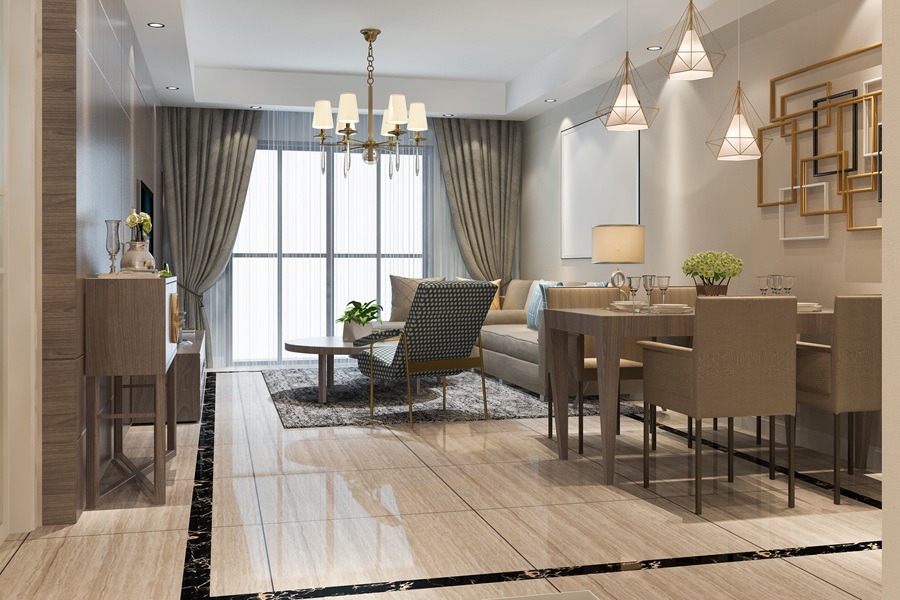Major life changes often leave an imprint on the spaces we live in. Rooms that once felt welcoming can become reminders of the past, making it harder to move forward. Redecorating can play an important role in creating a sense of renewal. For many people, this step becomes a way to take control of their environment and bring in elements that reflect a new stage of life.
Whether adjusting after the end of a relationship, experiencing a family member moving out, or stepping into a different phase of life, updating your home can support emotional recovery. With thoughtful planning, even small changes can make your living space feel supportive and refreshing without placing too much strain on your finances.
Why Redecorating Matters After Major Life Changes
The home environment strongly influences daily routines, comfort, and well-being. When the visual surroundings continue to reflect the past, it can be harder to build a sense of progress. Redecorating helps break that cycle by creating a fresh atmosphere that reflects present needs rather than old memories.
After separation or divorce, many people turn to their living spaces for comfort and stability. Even small updates can encourage emotional healing. For those navigating this stage, obtaining professional guidance, such as divorce expertise from Stowe Family Law, can help manage the legal side of change. At the same time, design updates focus on personal renewal. Both aspects support forward movement and create a stronger sense of balance.
Low-Cost Ways to Transform Your Space
Redecorating does not need to involve expensive renovations. With creativity and practical thinking, it is possible to make a noticeable impact without a large budget. Start with strategies that cost little but deliver high returns in terms of atmosphere.
Rearranging furniture can dramatically shift the feeling of a room. Moving a sofa, desk, or bookshelf provides a fresh perspective without spending any money. Repurposing existing pieces adds further possibilities. A dining table could double as a workspace, or a spare room could be turned into a hobby area.
Simple updates can bring new energy into the home. Replacing drawer handles, repainting old furniture, or sourcing items from second-hand shops allows you to refresh your environment affordably. Online marketplaces and charity shops often have high-quality items at reasonable prices.
Affordable Colour and Textiles
One of the most effective tools for transformation is colour. Painting a wall or even a single feature wall can alter the mood of a space quickly and inexpensively. Testing samples on small sections before committing to a larger project avoids costly mistakes.
Textiles offer another route to change without stretching the budget. New cushion covers, throws, and rugs add warmth and texture. Curtains and blinds provide opportunities to update light and privacy while contributing to the overall feel of the room. These additions can be made gradually to spread out expenses while still achieving an uplifting effect.
Room-by-Room Priority Guide
Focusing on the most frequently used rooms ensures that updates have maximum impact. Bedrooms benefit from thoughtful changes that make them restful and calming. Fresh bedding, softer lighting, and rearranged furniture help create a sanctuary for recovery.
Bathrooms can also be updated on a limited budget. New towels, a decorative shower curtain, or a small indoor plant make the room feel refreshed and welcoming. Kitchens often need organisation more than renovation. Decluttering surfaces and adding open shelving can create a more functional space without heavy investment.
Targeting changes in these areas allows you to make your home more comfortable and practical without overspending.
Managing Emotional Attachments to Shared Items
Sorting through belongings after a major life change can be difficult. Items carry memories, and deciding what to keep may feel overwhelming. A structured approach can make the process more manageable. Begin by categorising possessions into essential items, neutral objects, and emotionally charged belongings. This creates a clear framework for making decisions.
Tackling one area at a time prevents the process from becoming too intense. Small, steady progress helps avoid emotional exhaustion while still moving forward. When dividing property becomes complicated or disputes arise, professional advice ensures that arrangements remain fair and legally sound.
Creating New Memories Through Décor
Redecorating also provides opportunities to build new associations within your home. Personal photographs, framed artwork, or souvenirs from recent experiences create positive reminders of growth. These items replace older décor that may carry difficult memories.
Repurposing sentimental items into something new offers another constructive approach. Pieces of fabric can be turned into cushions or wall hangings, while inherited China might be transformed into mosaic art. This way, the history of these items is honoured while still moving toward a more positive environment.
Adding décor that reflects new hobbies or achievements reinforces the sense of fresh beginnings. The result is a home that balances respect for the past with enthusiasm for the future.
Practical Budgeting for Home Refreshes
Working within a budget requires careful planning. Start by reviewing fixed monthly expenses to identify how much can realistically be allocated to redecorating. Clear priorities should then guide spending decisions, focusing on changes that bring the greatest impact.
Paint, textiles, and lighting consistently deliver strong results for relatively little cost. Apps and digital tools make it easier to track spending, allocate funds to different rooms, and avoid overspending. Creating a phased plan allows you to spread costs over time, breaking projects into manageable parts.
Colour psychology can also guide choices, with calming tones like blues and greens helping to reduce stress, while warmer hues like yellows and soft oranges encourage positivity. Neutrals provide a clean base that can be adapted as tastes and budgets evolve.
By treating redecorating as a series of smaller steps rather than a single large project, financial strain is reduced while still achieving noticeable progress.
Take the Next Step Toward a Fresh Start
Redecorating after major life changes is not simply about design. It is an important part of moving forward, reshaping the home into a space that reflects new priorities and supports emotional recovery. Through thoughtful choices, creative solutions, and a realistic budget, it is possible to make lasting changes that bring comfort and positivity. Focusing on high-impact updates, managing belongings carefully, and introducing décor that celebrates new beginnings ensures the home remains a place of stability and renewal. By taking steady steps, families and individuals can transform their living spaces into supportive environments that match the next chapter of life.







Leave a Reply